Last Updated on October 12, 2021

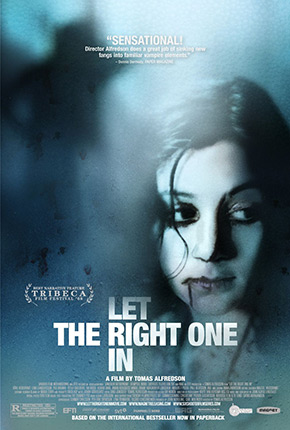
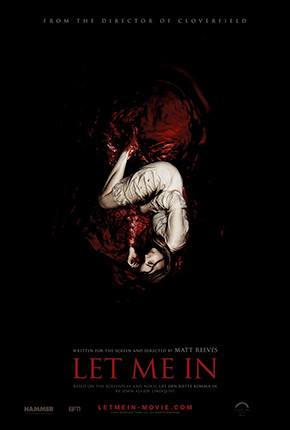
Nice to see you again, fans of the cinema! This is the Face-Off, where two movies enter and both movies leave, but one leaves in a slightly better light. Yes, here we take two competitors and compare their key elements and see who comes out the champion. It's a fierce competition that results in blood, tears, and online arguments, but the more brutal the battle, the sweeter the victory.
This last weekend may have been all about the return of everyone's favorite toys in TOY STORY 4, but there's one more toy just dying to make his acquaintance with a new batch of viewers, and his name is Chucky. The remake of CHILD'S PLAY certainly had fans curious as to how the killer doll would be brought into a new era, and even made many recall some of the best horror remakes out there. That's why this time around I will be digging into a modern classic horror movie and the remake that stands as one of the best examples of approaching the same material with a fresh perspective. Get ready for blood and friendship, because it's LET THE RIGHT ONE IN vs. LET ME IN.
A vampire romance movie from Sweden, LET THE RIGHT ONE IN FROM director Tomas Alfredson was one of the most talked about movies of 2008, which offered masterful vampire storytelling in an age where audiences were beginning to flock to the likes of TWILIGHT and its handsome, sparkly monsters. It didn't take long after breaking out that a remake was put into production with Matt Reeves at the helm, and much to everyone's delight, it was met with praise and championed as a remake done right.
But which movie nails the better balance of romance and horror, vampire thrills and childhood innocence? Does the original still hold up, or does the remake take things to places its predecessor wasn't able to? Sharpen your fangs and scroll on down!
Kåre Hedebrant as Oskar
Lina Leandersson as Eli
Per Ragnar as Hakan
Peter Carlberg as Lacke
Ika Nord as Virginia
Patrik Rydmark as Conny
Kodi Smit-McPhee as Owen
Chloe Grace Moretz as Abby
Richard Jenkins as Thomas/The Father
Elias Koteas as The Policeman
Sarah Barrese as Virginia
Dylan Minnette as Kenny
Tomas Alfredson didn't go into LET THE RIGHT ONE IN as a fan of vampire movies, or even horror movies for that matter. Instead, he came at it from a humanist perspective, focusing on the bond between Oskar and Eli, which meant favoring a visual style and tone that no doubt emphasized a quiet, wintery sense of dread, but had the natural look and flow of a character drama. He worked with cinematographer Hoyte van Hoytema to favor soft lighting and longer takes to establish an environment as natural and cold as the snowy Swedish ground. This may not be the kind of sensibility you would find in a mainstream horror movie on this side of the world at the time, but doing so here was precisely the way to go, as it ensured that no matter how vicious or suspenseful the movie got, the relationship between the two young leads remained at the forefront of everything. There's a way he composes his shots, like when the two start to become closer, that gives the scenes between them a certain intimacy and allowed for more facets of the performances to come out, like when he starts shooting close up during the Rubik's Cube scene. That extends to singular character work as well, letting viewers linger on certain moments in uninterrupted shots so as to let the emotional weight or terror sink in, particularly when Eli kills the man in the tunnel and when Hakan dumps acid on his face. There is a beauty and poetry to the way Alfredson made this movie look and move, both when it's terrifying and bloody and when it's just about two young (or “young” in Eli's case) people finding and accepting each other.
Right from the opening scene you can Matt Reeves is making a much different kind of movie here, at least from a visual sense. The ambulance comes barreling down the empty road, with Thomas writhing in the back after dumping acid on his face. It's visceral and in a dark way, which is something the original movie isn't very often. Reeves should get a lot of credit for keeping the main story of his remake in tact while at the same time leaving his own (bite) mark on it. Whereas the original favored muted, diffused lighting, Reeves works with deeper shadows, more cuts and a bit more aggression to make it feel much like a horror movie in ways the original wasn't. The tunnel sequence where Abby kills that guy is more violent and builds the suspense by getting deeper into the back and forth between her and poor soul – and that's just one aspect of this greater emphasis on terror. He also uses a lot of mirrored staging, shifting the framing to the other end of the screen during certain key moments (when Owen and Abby meet) to recall the original, but to tweak it ever so slightly for new viewers. It's a darker, more visceral experience, and there's enough about the way he approaches the cinematography and key scenes that ensures the story loses none of its emotional weight or sense of dread and getting sweet, soulful performances out of the young cast. As passionate as his work is, you can tell the goal was also to “Americanize” the work of Alfredson and his team, providing quicker and bloodier thrills and a sleeker look. While that certainly works here and has its merits, it also can't help but feel like a piggy-backed take, as he saw what he liked from the original and put his own spin on it. That makes for excellent back-to-back viewing experience, but in this case, I like Alfredson's more natural approach to the material, which more deftly blends the romance and the horror.
Adapted from his own novel, John Ajvide Lindqvist did a masterful job taking what worked about his book and incorporating it here, while taking what would've bogged it down and left it on the cutting room floor. Character arcs are more streamlined, like that of Hakan, Eli's “assistant”, and removing the character's paedophilic nature. Instead, much of that is left ambiguous to the viewer and leaves in the air a bit of mystery. What makes the story of Oskar and Eli so beautiful is left firmly intact, especially how their bond forms not out of action and big moments, but rather by slowly building and born out of natural acceptance for one another, no matter their darker sides. And they both have them, to be sure, like how Oskar has dark fantasies and an interest in all manner of death, while Eli, you know, has some issues with biting. Streamlined in there is the B-story centering on the movie's adult antagonist, Lacke, who with his suspicion about all the death going on sort of becomes a one-man angry village, like folks in a Frankenstein movie who eventually storm the castle and try and burn the creature. Between him and the bully, Conny, the movie's fascinating themes between what is truly evil and what is truly good are richly explored, and Lindqvist's script is a perfectly streamlined but no less intelligent examination on love, friendship and everything good and evil in this world.
Much like his work on the other end of the camera, Reeves did a great job taking what made the original movie memorable and adding his own little touches to it for American audiences. The core of the relationship between Owen and Abby is still there and just as meaningful and often profound. He even gets into the minds of the characters a bit more clearly, like with Thomas, Abby's “assistant”, who works more as a man getting sick and tired of killing people for Abby, the actual acts of which he switched up to be more like a vicious serial killer. In this sense, there are actually more areas of the movie that have greater dimension than the original, even if, ultimately there's a big chunk that is changed for the worse. The shift away from Lacke (and his girlfriend Virginia) as primary characters, becoming more subjects in Owen's hobby of REAR WINDOW-ing, make their existence feel more random and akin to props than anything else. When Virginia burns alive, it's rushed and the plot motivation isn't as strong, the same going for Abby's kill in the tunnel, this time around done on some random joe rather than someone we got to know a bit beforehand in the original. All of this is done as motivation for the new antagonist figure, the unnamed policeman, who has little personal stake in the investigation of the murders and more an obligatory one. That whole aspect of the movie feels less engaging than in the original and feels more like an attempt at presenting elements American viewers are more familiar with, i.e. cop drama. As I said, the core of the story is strong as ever, and Reeves even makes some praise-worthy changes, but there's a whole chunk of the movie that feels more watered down in the change-over.
Bits:
Squeal Like a Pig
Draining the Blood
Meeting on the Playground
Feeding Under the Bridge
Whip with a Stick
Acid on the Face
Tumble from the Building
Going Steady
Stick Slap!
Botched Hunt
Burning in the Daylight
Let Me In
Finding Eli's “Coffin”
Pool Rescue/Slaughter
———-
Lines:
Oskar: “Aren't you cold?”
Eli: “No.”
Oskar: “Why?”
Eli: “I guess I've forgotten how.”
—–
Oskar: “But… Are you old?”
Eli: “I'm twelve. But I've been twelve for a long time.”
—–
Eli: “You have to invite me in.”
—–
Oskar: “Well… Will you be my girlfriend?”
Eli: “Oskar… I'm not a girl.”
—–
Eli: “If I wasn't a girl… would you like me anyway?”
Oskar: “I suppose so.”
—–
Oskar: “Squeal like a pig. So, squeal.”
—–
Eli: “Just so you know, I can't be your friend.”
Oskar: “Why not?”
Eli: “That's just the way it is.”
Bits:
Hunting the Victim
Meeting on the Playground
Rubik's Cube
Attack in the Tunnel
Dumping the Body
Bullies in the Bathroom
Cra Wreck
Acid Face
Tumble from the Building
Going Steady
Pole Slap!
Attacking Virginia
Burning in the Daylight
Let Me In
Finding Abby's “Coffin”
Pool Rescue/Slaughter
———-
Lines:
Owen: But how old are you, really?
Abby: Twelve. But… I've been twelve for a very long time.
—–
Abby: “You have to invite me in.”
—–
Abby: “Would you still like me… even if I wasn't a girl?”
Owen: “What do you mean? I don't know. I guess. Why?”
—–
Abby: “You have to hit back. You have to hit back hard.”
Owen: “I can't. There's three of them.”
Abby: “Then you have to hit back even harder. Hit them harder than you dare and then they will stop.”
—–
Abby: “Just so you know, I can't be your friend.”
Owen: “Why not?”
Abby: “That's just the way it is.”
—–
After a year-long casting process, Alfredson and his team found his leads in Kåre Hedebrant and Lina Leandersson as Oskar and Eli. Together, they're the perfect pairing of damaged young souls and gives performances that exhibit a subtlety beyond their years. Hedebrant manages to retain the innocence of Oskar underneath the character's defenses and more macabre side, spurned by the severe bullying he gets. Leandersson has calm, measured wisdom that makes her character feel appropriately ancient, but like Oskar, there's a tenderness underneath that shines through now and again. It should be mentioned that in order to give her voice an older feel, and to make her gender more ambiguous (in the novel the character is a castrated young boy, which the movie alludes to but never outright reveals) another actor was brought in to dub all her dialogue, and for that Alfredson hired Elif Ceylan. But what comes out in their physical performance is what's more important, and the two give performances beyond their ages that are grounded and rooted in a deeper history, and they're given extra weight by the intimate direction of Alfredson.
The performances of the two young leads in the original would be hard to top, but Reeves found two very capable leads in Kodi Smit-McPhee and Chloe Grace Moretz. The two were recommended by the directors of the movies THE ROAD (McPhee) and KICK-ASS (Moretz) and became two of the top young talents to look out for after this one came out. Like in the original there's a certain level of humanity they're tapping into that makes their work almost as impressive as the first two. McPhee is a more sensitive Owen, his interest in violence more toned down and with emphasis put on his loneliness, which makes it very easy to sympathize with him. Moretz is a genuine talent who showcased some impressive range at such a young age, and indeed she flexed some serious chops here. Like the depiction of Owen, her vampiric Abby is a bit more sensitive and easy to relate to, even when she turns into a monster and sucks down blood. For the sake of this piece, though, I found the work from the two slightly more compelling in the first movie, which is also due to how they're depicted, especially Eli, who stands apart as a being of unknown age and has a more mysterious aura.
Like a lot of other elements in the movie the score by Johan Soderqvist is very underplayed and used sparingly in the movie. Making up much of the score is subtle, quiet pieces not meant to dominate the scene but to gently uplift the most fundamental emotional moments. Tracks like “Eli and Oscar” have low-key, sentimental sounds that highlight the innocence of the characters. But when the movie gets freaky the score accommodates, like a twisted track with “Lacke Dies,” which accompanies the man being devoured by Eli when he tries to kill her. It's a simple score that does the job well, but this movie isn't quite about the music as much as it is about crafting a quiet atmosphere.
Michael Giacchino walked a tightrope with his score here when trying to effectively balance the more horrific cues and tone with the abundance of innocence between the characters. He does the job excellently, kicking off the score with some suitably scary tracks like “Hammertime” and “Los Alamos”, which between them use haunting vocals, twisty strings and heavy sounds to create a menacing vibe. But like the score from the original, it can hit the opposite moments too, and Giacchino does so more effectively with tracks like “First Date Jitters” a sweet, soulful piece that juxtaposes all the other horror. Overall Giacchino's score finds more unique ways to balance the horror with the character drama, and stands on its own as a worthy horror romance score that makes for great repeat listening. If, you know, that's the kind of mood you're in.
Going back to what I pointed out earlier, Alfredson didn't approach this with the same kind of love for the horror genre that Reeves did, instead keeping the scares minimal and more atmospheric. But that's what makes the movie such an excellent blend of dread and humanity, the fact that it all feels so natural. That scene in the tunnel is perfectly frightening, and while the pool scene was done with more violence in the Reeves version, the finale is rather brutal and dark and masterfully staged. For a man who has gone on the record saying he wasn't all that familiar with horror movies when making this movie, nor did he seek them out for inspiration, Alfredson sure did a great job making a freaky movie.
As should be the fashion for an American remake, the blood is a deeper red and more plentiful than the original, and Reeves crafts some excellent tension where the original didn't. Yes, yes, the kills at the hands of Abby are the bloodiest and most propulsive, even if the CG vampire action is a bit dated. But on top of that, we have some masterful tension with Thomas and his killing of unsuspecting prey (that scene where he's trapped in the back of the car is brilliant). But I guess that's what a budget 5x the size the original can get for you, and it makes LET ME IN a more ferocious, visceral experience that makes it stand apart from the original better than anything else.
Awards:
Golden Schmoes:
Nominee:
- Best Horror Movie
*Another 73 Wins and 52 Nominations per IMDb**
Praise:
Rotten Tomatoes: 98% (90% Audience)
IMDb: 7.9
Metacritic: 82 (8.7 Audience)
Money:
$2 million domestic ($11 million global)
Awards:
Golden Schmoes:
Nominee:
- Best Horror Movie
- Most Underrated Movie
*Another 14 Wins and 26 Nominations per IMDb**
Praise:
Rotten Tomatoes: 88% (76% Audience)
IMDb: 7.1
Metacritic: 7.9 (8.6 Audience)
Money:
$12 million domestic ($24 million global)
Let is never be said that LET ME IN is a worthy remake to LET THE RIGHT ONE IT, as it does exactly what a remake should and take the story we all love and find a new way to tell it, all while keeping the heart and soul alive. There's a lot to love about the remake that's not in the original, and those elements (the horror, the score) may actually be enough to make some people like this new one more. But for my money, the core mechanics, performances, and scripting add up to a stronger, more cohesive and more rewarding experience that manages to stand apart from all other movies in the genre without denying any of the elements that fans love. It's a perfect twist on the vampire formula that remains just as engaging an experience today as it was a decade ago, and while the remake does enough to stand on its own, it's no match for the subtle perfection of the original horror masterwork.






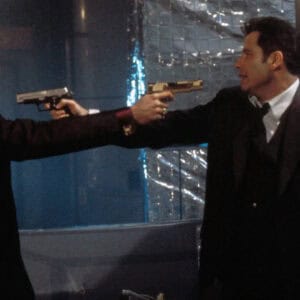

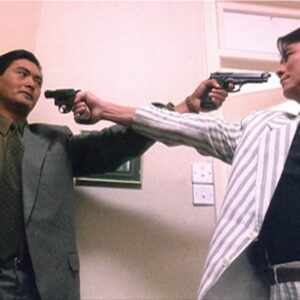
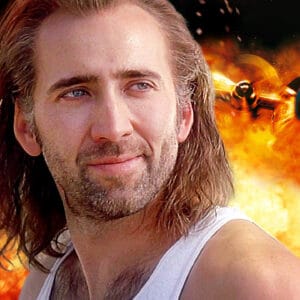



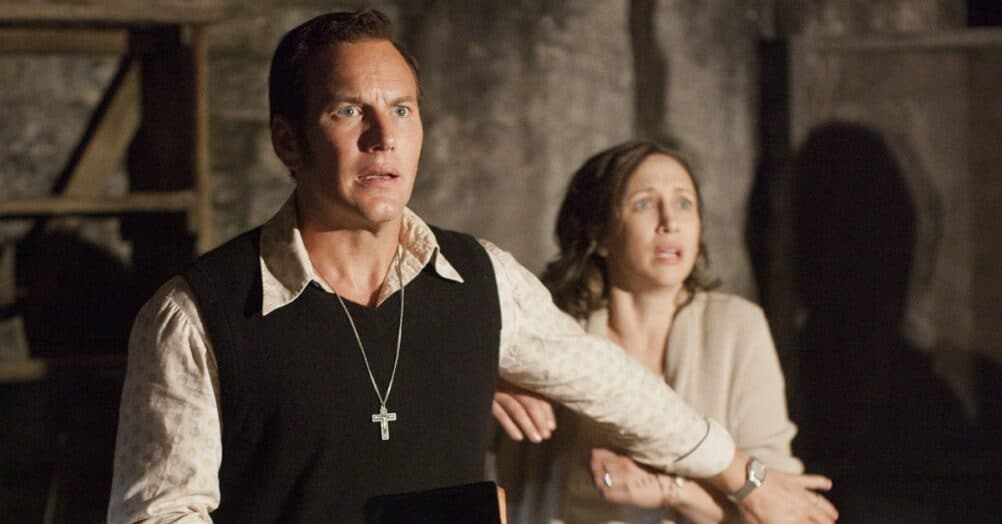






Follow the JOBLO MOVIE NETWORK
Follow us on YOUTUBE
Follow ARROW IN THE HEAD
Follow AITH on YOUTUBE